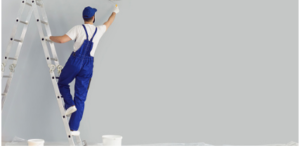Industrial painters provide essential maintenance to machinery and structures within industrial settings. They apply protective coatings to equipment and buildings to protect them from corrosion.
 Ten10 industrial painters Auckland receive on-the-job training from their employer, which allows them to learn specific painting techniques used by the company and safety regulations and practices.
Ten10 industrial painters Auckland receive on-the-job training from their employer, which allows them to learn specific painting techniques used by the company and safety regulations and practices.
Education and Training
Painters can develop their skills through several means. Apprenticeship programs provide hands-on training, while on-the-job training may last from a few weeks to several months as experienced painters shadow them and perform duties under supervision until they are ready for self-supervised projects. Some painters pursue certification from the National Institute of Painting and Decorating as an additional credential on their resume when searching for employment.
Painting and coatings application training programs typically cover topics like paint safety, equipment operation, surface preparation, painting methods and basic coatings theory. Some may also offer specialty training in corrosion control, protective coatings or blast cleaning. Students in these programs typically receive hands-on experience with industrial-sized painting and coatings equipment.
Aspiring industrial painters should possess physical stamina and the ability to follow detailed instructions. Furthermore, they must be capable of climbing ladders safely while working for extended periods in large, open spaces. Finally, they must know how to operate sandblasting and painting equipment safely.
Employers look for candidates with experience operating a forklift, which helps them quickly get up-to-speed and start work without spending hours learning the fundamentals.
Experience
Most industrial painters need at least a high school diploma or equivalent; however, most receive on-the-job training from their employers for anywhere between several weeks to a year, working alongside experienced Ten10 industrial painters Auckland to learn their methods and products used by specific companies.
Experience with surface preparation techniques is also necessary for industrial painters, such as abrasive blasting, chemical etch washing and metal pickling. In addition to applying primers and coatings, industrial painters are responsible for mixing paint as needed using equipment like viscosity cups and thickness gages; sometimes, this also includes mechanically etching surfaces before force drying them with compressed air fans.
Additional qualifications for this position include physical stamina and an excellent work ethic. Workers in this occupation are frequently required to stand for long periods, climbing ladders or scaffolding to access hard-to-reach places. Furthermore, they should be familiar with using power tools as well as hand and spray equipment and must also be capable of operating or assisting in operating an industrial paint booth – these workers usually work at manufacturing production facilities but may travel directly to customer locations as needed.
Certification
Industrial painters must complete a training program before earning certification if they plan to specialise in certain areas. For instance, those interested in applying protective coatings to aircraft must earn certification through the Society for Protective Coatings (SSPC). Coating Application Specialist is an exam that must be passed, and experience gained in corrosion prevention and repair are necessary to become qualified in this area.
Safety
Painting involves working with chemicals and solvents that are hazardous to your health if mishandled, including fumes that can trigger breathing disorders like asthma or dermatitis, while paint often contains carcinogens, VOCs, or lead. Therefore, OSHA regulations mandate that safe ventilation systems, personal protective equipment, and disposable clothing be worn during indoor painting projects.
Other potential safety hazards include tripping on misplaced tools or falling from ladders. Good housekeeping by keeping the work area clear of walking impediments is essential in preventing such accidents while being familiar with proper lifting techniques is necessary to avoid back injuries.
Many paints and sanding materials can harm skin, eyes or lungs; therefore, wearing gloves, face masks, and safety glasses is vital when handling these substances. Furthermore, when working with preservative-rich materials like turpentine or ammonium hydroxide paints that require preservatives such as adequate ventilation, must also be ensured.
Similarly, when working with flammable solvents – like thinners and degreasers – ensure they are stored away from combustible materials, and activate your fire alarm when using them close by. Furthermore, having a fire extinguisher handy on-site for emergencies should also be considered important.

